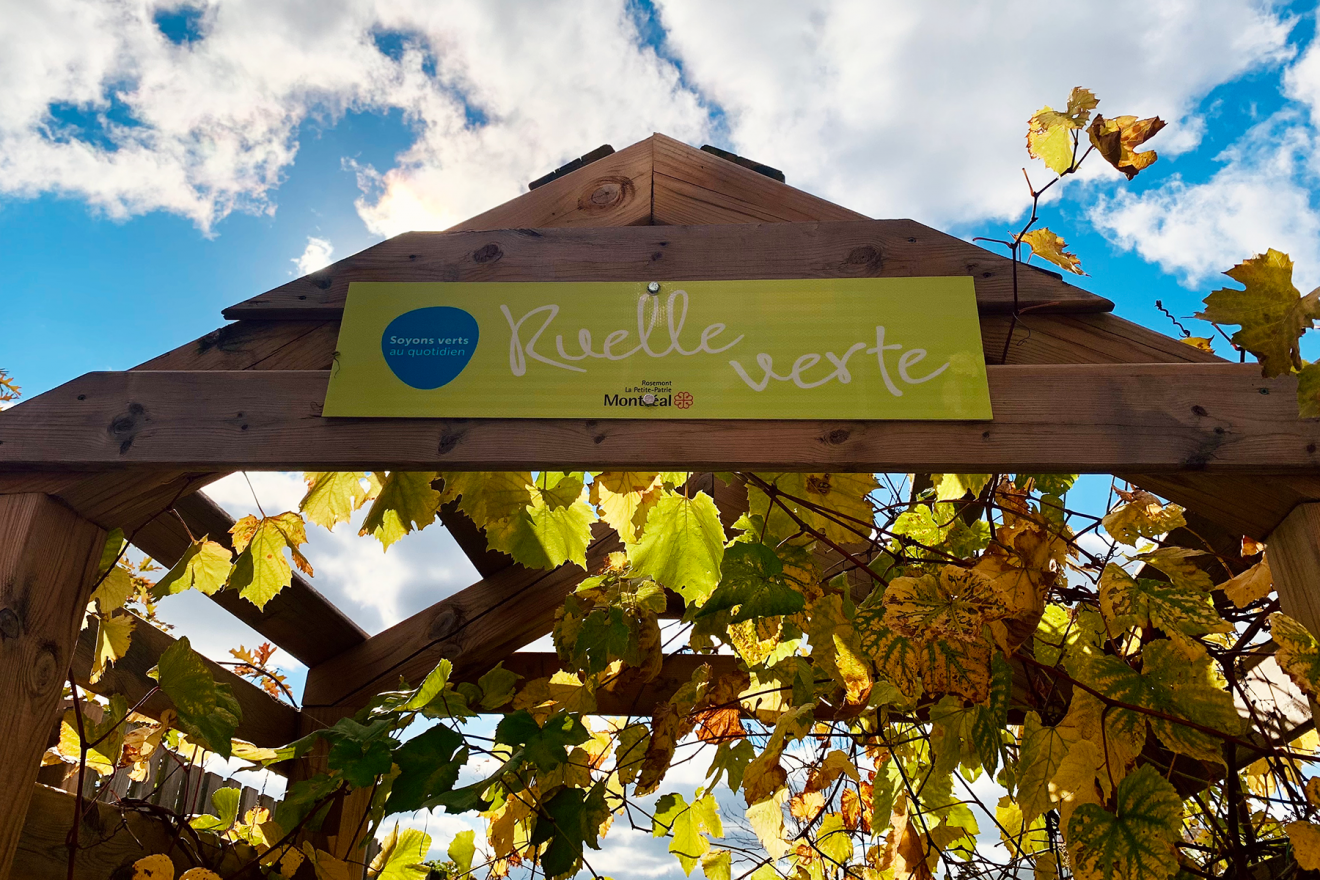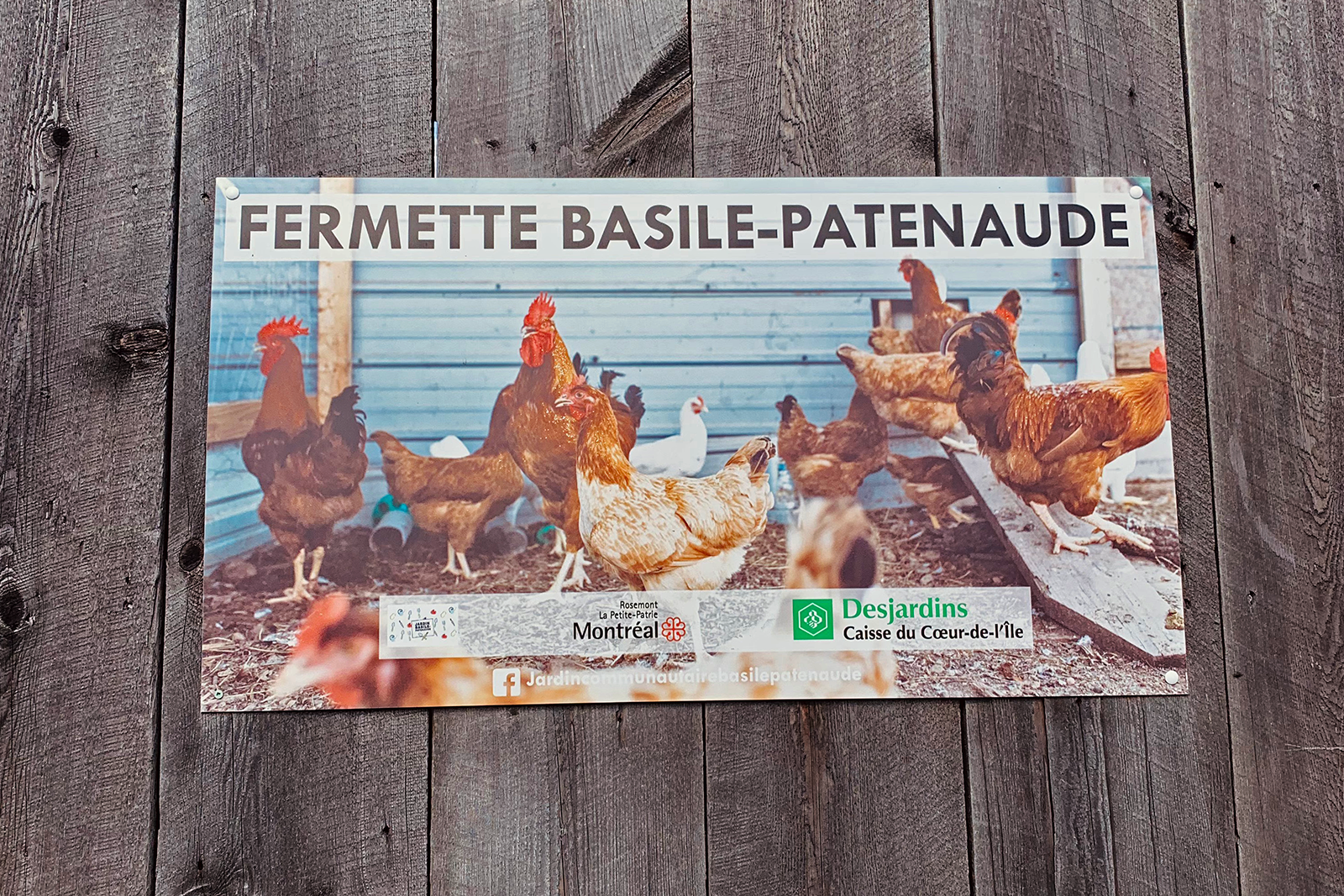
The sign on the wooden arch reads "Ruelle verte" or "green alley." (Clarice Knelly/SUNY-Plattsburgh).

The sign on the wooden arch reads "Ruelle verte" or "green alley." (Clarice Knelly/SUNY-Plattsburgh).
William Borque said the alleyways that surrounded Rosemont-La Petite-Patrie’s community garden in Montreal used to be a “wasteland.” Now, they’re brimming with fruit trees, mushroom gardens, and local art.
Borque is president of the Jardin Communautaire Basile-Patenaude, a community garden committee which has pioneered a new wave of garden and urban farming projects in the Rosemont-La Petite-Patrie neighborhood of Montreal. A number of local residents have taken over the neighborhood’s vacant lots and hidden crevices to creatively congeal eco-friendly and urban living––resulting in the so-called “edible alleyway.” According to Borque, the community garden team started the edible alleyway project in 2015 as part of a land rehabilitation project, which utilized a 20,000 square foot vacant lot.
The lane has grown to accommodate a neighborhood chicken coop, over 100 fruit trees, a mushroom garden, and fences plastered with local art. In the alleyway, members of the community interact with nature and harvest fresh produce free of charge, alleviating food insecurity in the area.
Rosemont-La Petite-Patrie is a densely populated neighborhood northeast of downtown Montreal, a multi-cultural and vibrant side of the city beginning to take on a new identity. The trendy and growing neighborhood was once a maze of concrete alleyways solely defined by nearby famed attractions, like the Jean-Talon Market or the Olympic Village. With community projects like the edible alleyway, Rosemont-la-Petite-Patrie is making a new name for itself by growing greener.
The garden committee wanted to revitalize the space for the neighborhood, so they brainstormed projects to beautify the area. They conceived of the alley, separate from the community gardens, as a place where anyone, from any part of the city, can come and walk through.

“The place is both a place of passage and a place of relaxation,” Bourque said. “Some people take it just as a shortcut while other residents of the neighborhood frequent it. The henhouse is a very popular stopover for families… Fruit trees are very popular in the harvest season and we often see people with bowls scooping fruit at the end of summer.”
The transformed space is a point of pride for locals, who clean the space and care about how it looks. It has provided a place for community bonding and understanding.
“The fact that people from different backgrounds or social classes meet there allows a dialogue that would probably not take place otherwise,” Borque said.
Green space is vital to urban areas as it provides invaluable physical and mental health benefits to residents with access. Yet, these essential spaces can disappear from cities as increased urbanization takes place. It is difficult to quantify how fast green space is sacrificed to urbanization due to a lack of research, but the effects can be felt tangibly.
In a 2020 article in the journal Land, researchers Johan Colding, Åsa Gren and Stephan Barthel note that the reasons for the loss of green space need to be studied further. Yet, one reason for shrinking public land is increased privatization of green areas. According to the article, green space provides “invaluable ecosystem services to humans that are important to plan for in cities.” For example, green space helps absorb carbon dioxide, thus helping to improve air quality, reduce heat and offset a city’s carbon emissions. However, the researchers found “economic motives and urban neoliberal policies are liable explanations behind the loss of public space in many cities.”
Borque has noticed a loss of public space happening in his own city. “The original design of towns included public passageways, while in most new projects, these passages are now private,” Borque said. “It isolates people––since no common place exists anymore.”
Yet, the Jardin Communautaire Basile-Patenaude have made a difference in Montreal by creating an open space for residents to wander and gather.
“The idea of focused concrete cities no longer makes sense,” Borque said. “The garden and these kind of community projects are an image of this new way of seeing the city. People need to live in their neighborhood and to feel good about it.”